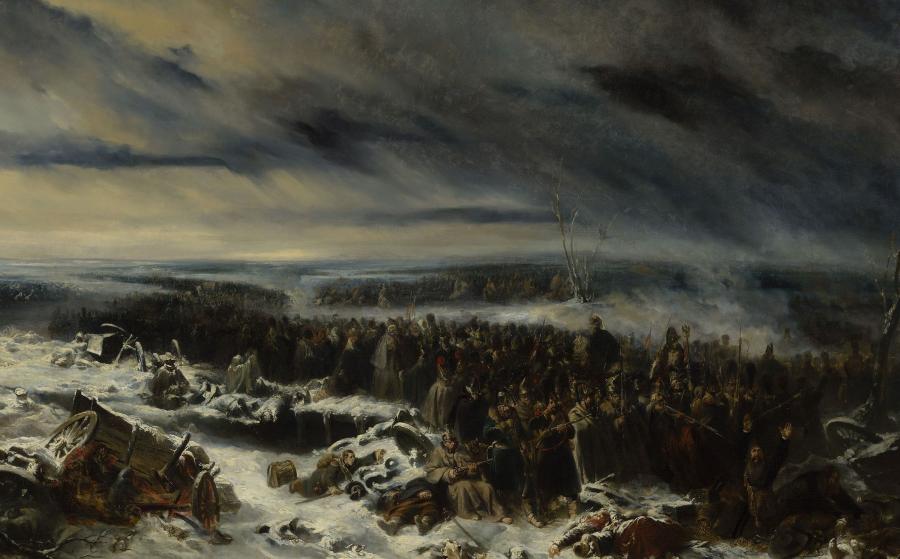Episode in the Campaign of Russia
Information sur l’artiste
Nicolas Toussaint Charlet [Paris, 1792 – Paris, 1845]

Épisode de la campagne de Russie, 1836.
Image © Lyon MBA - Photo Alain Basset
An endless column of soldiers advances laboriously across a desolate, frozen landscape covered with snow, among corpses and wounded men. The composition is dominated by shades of grey. Charlet, with this tragic image, illustrates the end of the Russian campaign initiated by Napoleon, who set off in 1812 to attack this vast empire. The endeavour ended in failure and the retreat of the Great Army, a deadly winter journey during which over 300,000 French soldiers died, victims of the cold and enemy attacks.
Created over twenty years after this historic event, the painting was presented at the Paris Salon of 1836, where it enjoyed a great success. At the time Napoleon, with the victories won by his armies, was becoming a veritable cult figure, a phenomenon which was rekindled when his ashes were returned to be buried at Les Invalides in 1840. Charlet contributed to the creation and spread of this legend with his paintings, but mostly with large numbers of lithographs that put the humble soldiers of the Empire's armies at centre stage.
The artist expresses his own vision of History in this work. He goes beyond the historical and military significance of the event, bringing the men who fought the battle in all their agony and suffering to the fore, rather than the generals who gave the orders. As Alfred de Musset wrote about this piece, "it is about the great army, it is about soldiers, above all it is about men; it is pure human suffering, beneath murky skies, on frozen ground, with no-one to guide, no leaders, no honour. It is despair in the desert". The extreme violence of the subject and the thoroughly Romantic style even led his contemporaries to compare the painting to another image of human suffering, The Raft of the Medusa by Théodore Géricault (1819, Paris, The Louvre).
1836
Oil on canvas
H. 194.7; L. 294 cm
Received from the French government in 1836; long term loan from the Centre national des arts plastiques
Inv. A 19





